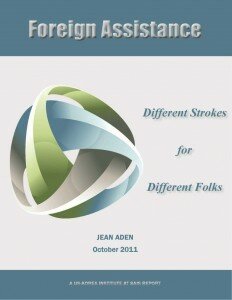Korea and ODA: Exploring Existing Models
 The US-Korea Institute at SAIS is pleased to release the first report in a three-part series by Dr. Jean Aden, examining South Korea’s ODA future.
The US-Korea Institute at SAIS is pleased to release the first report in a three-part series by Dr. Jean Aden, examining South Korea’s ODA future.
Having accomplished one of the most successful economic transformations of the twentieth century, transitioning from a major aid recipient to major aid provider within fifty years, Korea has recent firsthand development knowledge and experience to share with others who are in the process of development, and is keen to develop its position as a donor and member of the international donor community, commensurate with the size of its economy. Despite having only recently joined the DAC, the OECD’s choice to locate the 4th High Level Forum for Development Effectiveness (HLF-4) in Busan in November 2011 is an indicator of Korea’s potential to help shape the strategic agenda, while expanding its own development commitments.
However, at a time of relative abundance of aid, South Korea must therefore search for a niche where the hard-earned won of its people can have a real and demonstrable impact. Although Korea should avoid imitative behavior, there is much to be learned from the experiences of those who have already traveled the ODA road—Japan, the United Kingdom and the United States. Our intent in this first report is to assess each country’s mix of purposes for its aid, focusing on three types—development, commercial and security—to assess each country’s mix of purposes, and whether the different mixes result in different aid outcomes.
Download “Foreign Aid: Different Strokes for Different Folks.”



